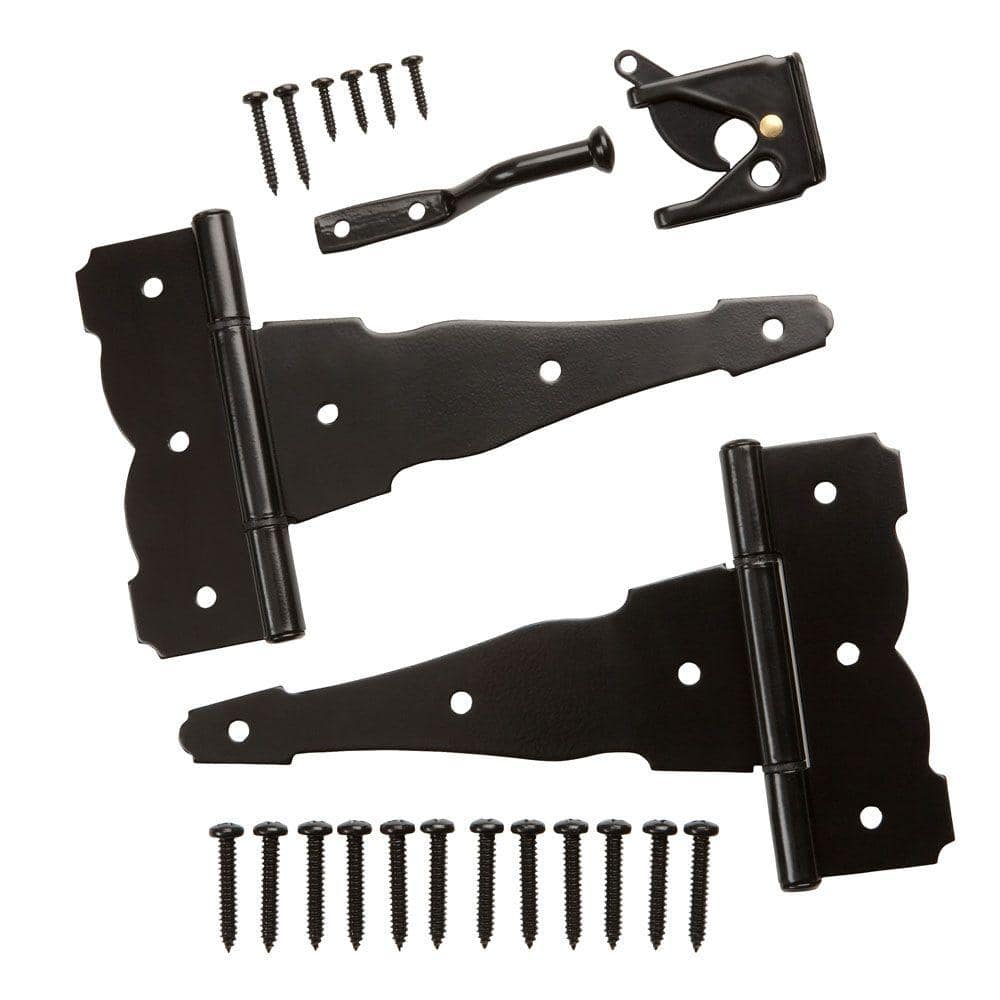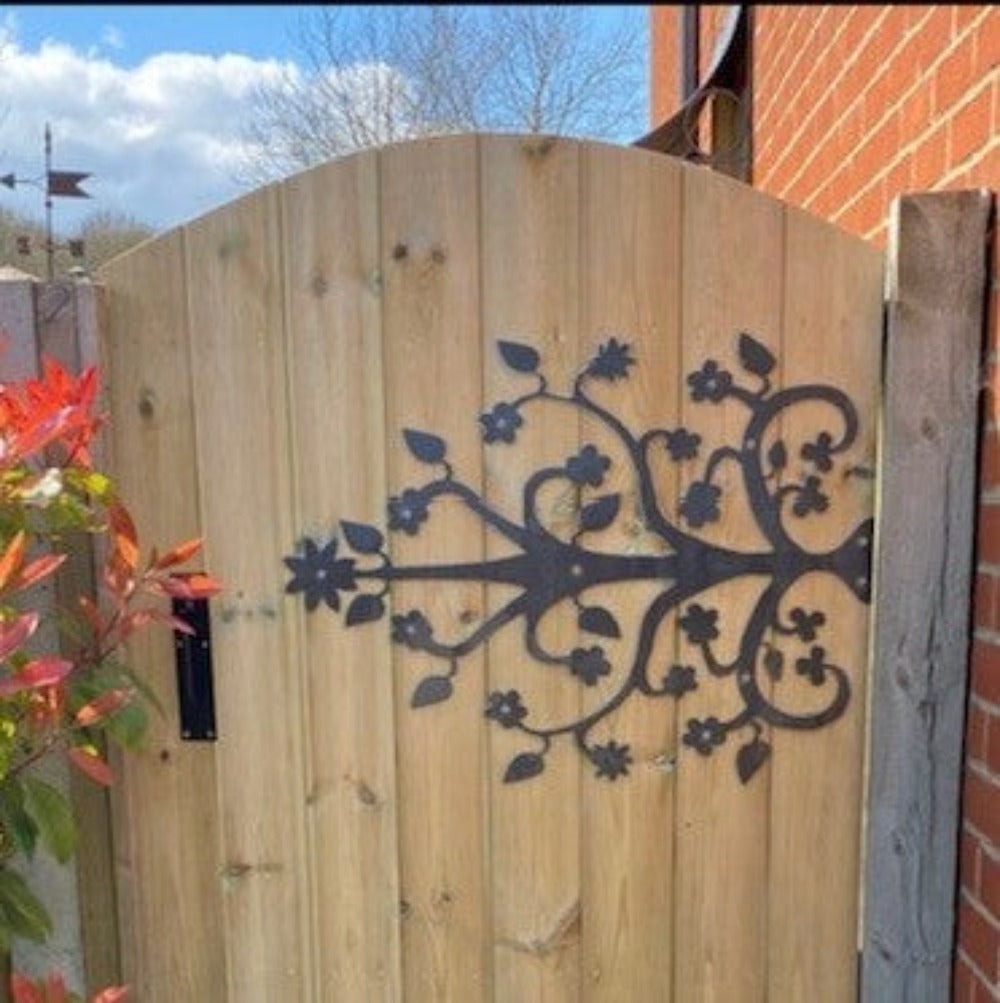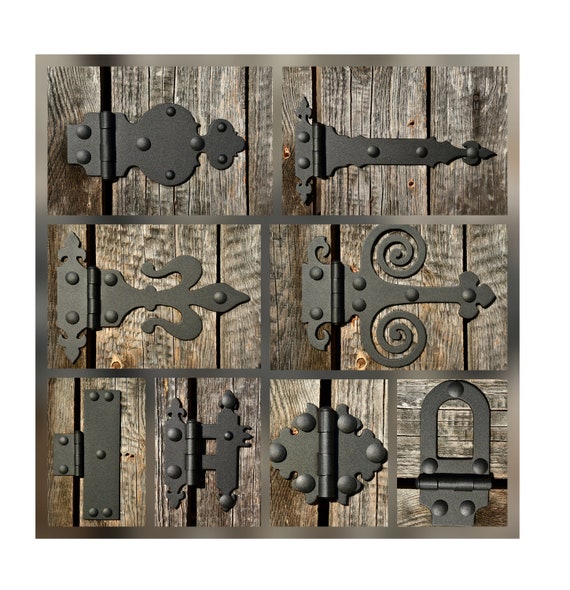When it comes to enhancing the aesthetic appeal of your home, every detail matters. One often-overlooked element is the gate hinge. Decorative gate hinges not only serve a functional purpose but also add a touch of style to your gates. In this article, we’ll explore various aspects of decorative gate hinges, including types, materials, benefits, installation tips, and maintenance. Drawing from personal experiences and extensive research, I’ve crafted a resource that is both informative and engaging. Let’s dive in!
1. Understanding Decorative Gate Hinges
Before delving into the specifics, it’s essential to understand what decorative gate hinges are and why they are important.
1.1 What Are Decorative Gate Hinges?
Decorative gate hinges are hardware components that allow gates to swing open and closed while adding an element of design to the overall appearance of the gate. Unlike standard hinges, decorative models are often embellished with intricate designs, colors, and finishes that can complement or contrast with the gate and surrounding décor.

1.2 Why Choose Decorative Gate Hinges?
Choosing decorative gate hinges is not only about aesthetics; it can significantly impact the functionality and longevity of your gates. Here are some reasons to consider:

- Enhanced Curb Appeal: Decorative hinges elevate the visual appeal of any gate.
- Functional Design: They are designed to support heavy gates, ensuring smooth operation.
- Diverse Styles: Available in various styles to match different architectural designs.
- Durability: Many decorative hinges are made of robust materials that withstand weather elements.
2. Types of Decorative Gate Hinges

Decorative gate hinges come in various designs, styles, and materials. Understanding these types can help you choose the best option for your gate.
2.1 Strap Hinges

Strap hinges are one of the most common types used for gates. They have a long, flat piece of metal that extends from the gate and wraps around the post. This design provides excellent support, making it ideal for heavy gates.
2.2 T-Hinges

T-hinges are shaped like the letter “T” and are often used for lighter gates. They are easy to install and provide a clean, simplistic look.
2.3 Pivot Hinges

For gates that require a unique opening mechanism, pivot hinges may be the answer. These hinges are installed at the top and bottom of the gate, allowing it to pivot open rather than swing outward.
2.4 Decorative Hook-and-Loop Hinges
These hinges allow for easy gate removal and installation, making them suitable for gates that require frequent access. They also come in various decorative styles.
3. Materials Used in Decorative Gate Hinges
The material of your decorative gate hinges plays a crucial role in durability and aesthetics. Here are some common materials:
3.1 Steel
Steel is a popular choice for decorative hinges due to its strength and resilience. It can be powder-coated or painted for added aesthetics.
3.2 Stainless Steel
For coastal areas or regions with high humidity, stainless steel is an excellent choice. It resists rust and corrosion while providing a sleek finish.
3.3 Wrought Iron
Wrought iron hinges offer a classic, elegant look. They are incredibly durable and can be intricately designed for a unique aesthetic.
3.4 Aluminum
Lightweight and resistant to rust, aluminum hinges are ideal for smaller gates. They can also be easily painted or anodized for color options.
4. Choosing the Right Decorative Gate Hinge
Selecting the right decorative gate hinge is vital for both functionality and appearance. Here are some aspects to consider:
4.1 Weight of the Gate
Ensure the hinge can support the weight of your gate. Heavier gates require sturdier hinges like strap or T-hinges.
4.2 Style and Design
Choose a hinge that complements your gate’s style. For instance, a rustic gate may look best with wrought iron hinges.
4.3 Finish
Pay attention to the finish of the hinge. A powder-coated finish can add durability and color, while a natural finish can enhance rustic or traditional designs.
5. Installation of Decorative Gate Hinges
Installing decorative gate hinges can be a straightforward process if you follow the right steps. Here’s a brief guide to help you:
5.1 Tools Required
- Drill
- Screwdriver
- Measuring tape
- Level
- Pencil
- Safety glasses
5.2 Installation Steps
- Preparation: Ensure your gate and post are ready for installation.
- Mark the Hinge Placement: Measure and mark where you will place the hinges on the gate and post.
- Drill Holes: Using your drill, create holes for the screws.
- Attach Hinges: Position the hinges and secure them with screws, ensuring they are level.
- Test the Gate: Open and close the gate to ensure smooth operation.
6. Maintenance Tips for Decorative Gate Hinges
To ensure the longevity of your decorative gate hinges, regular maintenance is key. Here are some tips:
6.1 Regular Inspection
Periodically check the hinges for any signs of wear or rust. Catching issues early can save you from needing a full replacement later.
6.2 Clean the Hinges
Keep the hinges clean by wiping them with a damp cloth to remove dirt and debris. Avoid using harsh chemicals that could damage the finish.
6.3 Lubrication
Apply a silicone or graphite lubricant to the hinge joints to ensure smooth operation and prevent rust.
7. Pros and Cons of Decorative Gate Hinges
Like any home improvement feature, decorative gate hinges come with their advantages and disadvantages. Here’s a quick overview:
7.1 Pros
- Enhances visual appeal
- Durable materials
- Variety of styles available
- Improves gate functionality
7.2 Cons
- Can be more expensive than standard hinges
- May require more maintenance
- Some designs may not suit every gate style
8. Comparison of Popular Decorative Gate Hinges
| Hinge Type | Material | Weight Capacity | Typical Use | Style |
|---|---|---|---|---|
| Strap Hinge | Steel | Heavy | Heavy Gates | Traditional |
| T-Hinge | Steel | Medium | Light Gates | Simplistic |
| Pivot Hinge | Stainless Steel | Variable | Unique Design Gates | Modern |
| Hook-and-Loop Hinge | Wrought Iron | Medium | Frequent Access Gates | Rustic |
9. Frequently Asked Questions (FAQs)
9.1 What are decorative gate hinges made of?
Decorative gate hinges can be made from various materials, including steel, stainless steel, wrought iron, and aluminum, each offering different aesthetics and durability levels.
9.2 How do I install decorative gate hinges?
You’ll need basic tools like a drill and screwdriver. Mark the hinge placement, drill holes, attach the hinges to both the gate and the post, and test the gate’s operation.
9.3 Can decorative gate hinges handle heavy gates?
Yes, but it’s essential to choose the right type of hinge. Strap hinges and heavy-duty T-hinges are best for heavier gates.
9.4 How often should I maintain my gate hinges?
It’s advisable to inspect your decorative gate hinges at least twice a year and clean and lubricate them to ensure they function correctly.
9.5 Are decorative gate hinges weather-resistant?
Many decorative hinges, especially those made from stainless steel or treated materials, are designed to withstand various weather conditions, but regular maintenance will help prolong their life.
10. Conclusion
Decorative gate hinges might seem like a small detail in the grand scheme of home improvement, but they can significantly enhance the beauty and functionality of your gates. By choosing the right type and material, installing them correctly, and maintaining them over time, you can ensure that they serve you well while adding charm to your home. I encourage you to explore the various options available and consider how these little details can make a big difference in your property’s overall appeal.